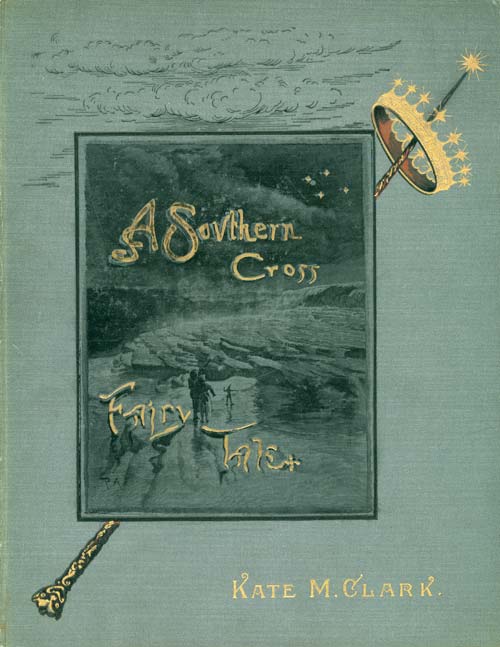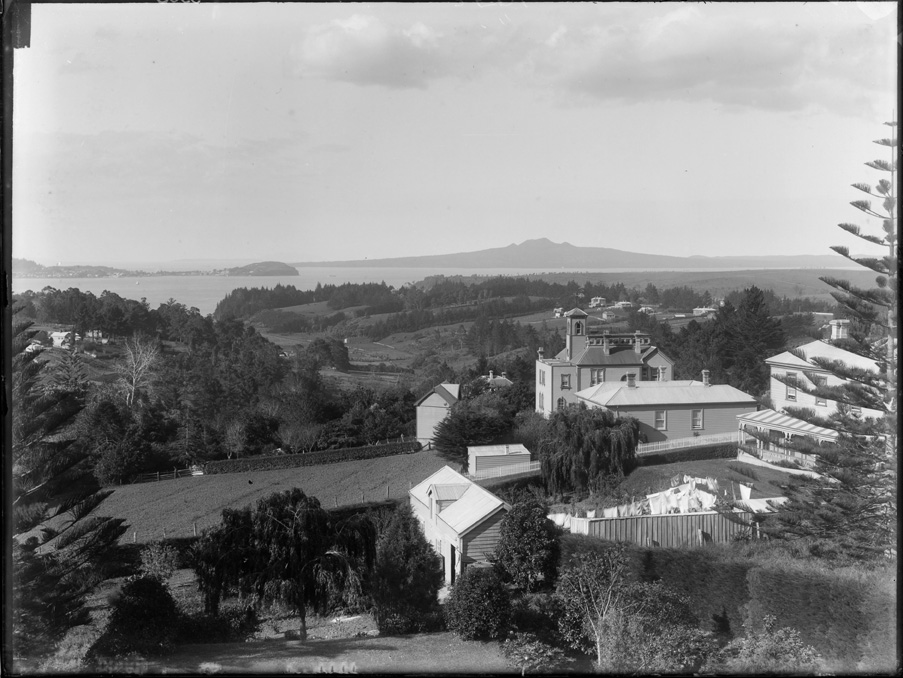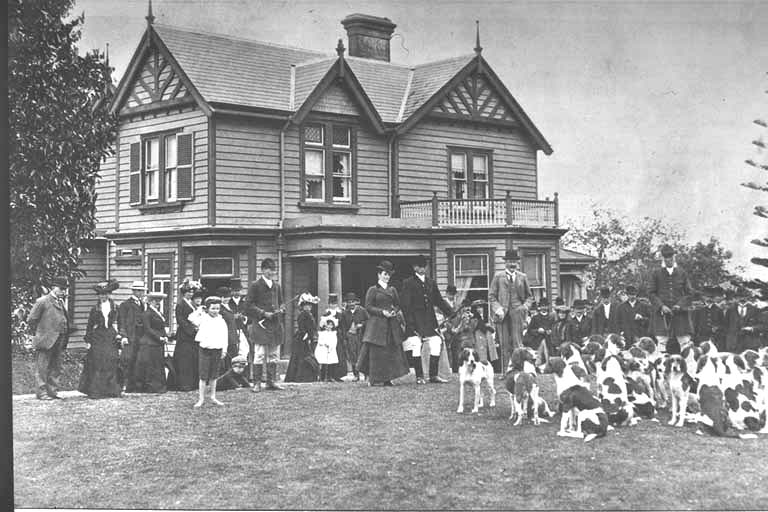Mrs Kate McCosh Clark – Author, Artist, Patron and Society Doyen
Kate Emma Woolnough, the daughter of Susan Bonner and her husband, Henry Woolnough, an architect, was born at Ipswich, Suffolk, England, on 15 May 1847. Her education included the study of art and she earned a living doing research for writers, often in the British Museum. [1, 2]
On 8 April 1875 she married James McCosh Clark [3] in Melbourne, Australia. After their marriage she and James lived in Auckland where he was a successful business man and local politician, serving as mayor for three years from 1880.
In 1865 James McCosh Clark bought a large Remuera home, The Tower, on 12 acres of land. Kate Clark, with the support of domestic servants, expertly performed her role as a society leader and mayoress at The Tower, considered to be ‘the best appointed establishment in or near Auckland’. Described as an excellent musician, ‘an accomplished painter and a woman of rare good sense’, she was a generous patron of music and art. At her home she organised groups of women for painting, reading and dramatic activities. She and her husband helped to reform the Auckland Society of Artists as the Auckland Society of Arts in 1880. Kate was on the society’s committee for 10 years, and exhibited oils, watercolours and drawings. They made generous donations of pictures to the Auckland Art Gallery when it opened in 1888. [4]
Kate Clark was also an important figure in charitable organisations in the city. In 1882 she worked closely with Eliza Cowie, wife of the Anglican bishop of Auckland, to establish the Girls’ Friendly Society, of which she was vice president. She was on the management committee of the Women’s Home, founded by Mrs Cowie in Parnell, serving as secretary/treasurer and also as publiciser and fund-raiser. She was also involved in the Jubilee Institute for the Blind. Keen on physical recreation and the outdoors, she went on climbing expeditions, and was active in the Auckland Skating Club.
In 1889, after several business failures, the Clarks went to England. There Kate Clark pursued a career as a writer. A Southern Cross fairy tale, which she partly illustrated, was published in London in 1891. In 1894 she published a collection of verse, Persephone and other poems. Her last work, Maori tales and legends (1896), was intended to interest and instruct young people about New Zealand and the Maori. Although its style was sentimental and dramatic its detailed, scholarly notes showed the depth of her research. She also wrote newspaper articles and short stories for magazines.[5]
James McCosh Clark died in Hastings, Sussex, on 26 January 1898. The following year Kate Clark and Beatrice Webb, who had recently visited New Zealand, represented the National Council of Women of New Zealand at the London meeting of the International Council of Women. Kate returned to New Zealand in 1900 and little is known of her life after this time except that she served on the council of the newly-formed Auckland Kindergarten Association and in 1909 was president of the Auckland Plunket Committee. She died at Auckland on 30 November 1926, survived by her two sons. The McCosh Clarks’ former home, The Tower, had been sold in 1895 to become part of King’s College (now King’s School).
Janet Crawford
September 2019
Kate McCosh Clark was not only an author, artist, patron of the arts and charities, and doyen at the centre of Auckland’s cultural and civic life, she was also an early Remuera land owner.
“It was always a pleasure to accept Mrs Clark’s invitation…specially gifted as a hostess, being gracious to everybody, desirous of helping all who need her aid, and most interesting as an accomplished painter and a woman of rare good sense”. Observation by Anglican Bishop of Auckland.
Her husband’s family were one of earliest and most prominent merchants to purchase land in Remuera during the 1850s and 1860s. The Clark’s collectively acquired over 30 acres of land along Remuera and Portland roads. During this period of economic buoyancy, the family’s landholdings were so extensive that Portland Road was originally named Clark’s Road.
In June 1885, she purchased a half an acre lot (46) on Portland Road, the future home of Wharema, and transferred the property to her sister, Emily Woolnough (c1857-1920) in December 1885, prior to her marriage to artist Edward Payton (1854-1944).
After leaving Auckland in 1889 when her husband fell from grace, she returned in widowhood in 1900, and in 1904 she became the owner of George Alfred Arney’s (1810-1883) home ‘Waimarama’, built c1860, in Bassett Road. In 1903 the land around Waimarama was subdivided into what is now Arney and Seaview Roads. Kate died at Waimarama at the age of 79 years on 30 November 1926. The house was sold the following year.
“OLD REMUERA PROPERTY. DISPOSED OF FOR £8OOO. One of Auckland’s oldest homes, the well-known Remuera property of the late Mrs. McCosh Clark, known as Waimarama, was sold by auction for £8OOO at T. Mandeno Jackson’s rooms yesterday. The property, which is situated in Bassett Road, between Arney and Seaview Roads, Remuera, commands a magnificent panorama of the Waitemata Harbour. It was offered in four sections, on one of which the house was built. The first occupant was the late Sir George Arney, at one time Chief Justice of New Zealand, and later occupants were the late Mr. John Murray, general manager of the Bank of New Zealand, and the late Mr, James Russell. When Mrs. McCosh Clark took over the land in 1904, she had the Arney Road frontage subdivided as it is today. The house contains 14 rooms and the surrounding grounds are magnificently laid out, giving the property the appearance of a park. Bidding commenced at £7OOO and rose by £IOO bids until the hammer fell at £8000, the purchaser being Mr. C. C. McMillan. The sale includes the whole property of 1¼ acres with the exception of one section.” [6]
Kate’s NZ Herald obituary, 1 December 1926, describes her as “woman of many accomplishments in literature, music and art” and as having a notable role in laying the foundations of the many of the present-day resources of the city. [7]
Jan Bierman
August 2020





